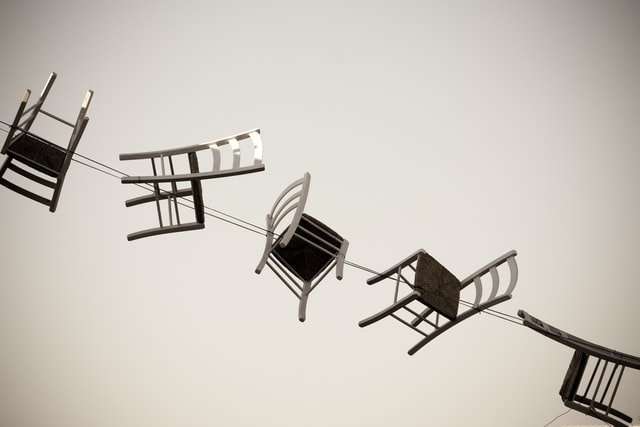Art and Artists:a blog about art, the artist, appreciating art and the art appreciation process.
Artists can be an interesting breed. As a professional I have met a few over the years, and they are certainly not all alike. Some seem to struggle with the work they create, or lack passion for it. Others believe so much in what they are doing that they are willing to make great sacrifices to bring it to fruition. Many just see it as their job, or a way to make some extra money, but some really love what they do.
One of my favorite things to observe is when I see that spark of passion in someone’s eyes when they talk about their work. It might be from a painter who’s talking about mixing colors together on his palette, or from a writer discussing character development, but whatever the medium it is fascinating to me.
Artists like this can appreciate their own work in ways most folks can’t. And if you’re truly passionate about what you’re doing then you can appreciate the work of an artist in ways that others may not understand, because you recognize what went into creating such beauty.
Art and Artists is a blog about art, the artist, appreciating art and the art appreciation process. This blog is for artists who want to improve their skills, as well as anyone who wants to learn more about art.
Art and Artists is an open forum where all can contribute with their thoughts and feelings about art. Every artist has something to offer in terms of experiences, techniques or views on life.
Art lovers are a lot like wine connoisseurs. They tend to be passionate about what they believe is good art. However, it is often hard for them to explain why they believe that a particular piece of art or wine is good or bad.
Taste evolves and changes over time. When you are young, you may not have the appreciation skills or the experience to appreciate fine art in its full glory. This can cause frustration on your part as you try to find art that you enjoy. You may not understand why your taste differs so much from others who claim to be experienced art lovers.
Tasting wine and appreciating fine art is an acquired skill that takes time and practice to develop. A passionate collector will spend many hours studying all aspects of fine art and the artist’s life. The more time you spend learning about artists and their works, the better able you will be able to distinguish which pieces of art really stand out for their unique beauty and appeal.
This blog is about art appreciation basics, tips, techniques, what defines great art, identifying counterfeits, gallery etiquette and more! Our blog also includes interesting facts about famous artists, their lives, works of fine arts and so much more! We also love comments from our readers on our posts!
There are an infinite amount of reasons why someone would appreciate art, but the majority of people who appreciate art do so because they believe it is beautiful. They believe that beauty is something that deserves praise and attention. Others believe that art is to be appreciated for the way it makes them feel. It may be a specific emotion, like excitement or peacefulness, or a more generalized feeling of well-being. There are many other reasons, but these are the two most common.
For some people, simply appreciating art is enough as long as others also appreciate it. For other people, who might be artists themselves or may not even understand how others can appreciate art without understanding it themselves, they feel the need to seek out and understand why certain pieces of art are beautiful and what makes them so.
The importance of appreciating art lies in its contribution to our culture and the world at large, but most importantly in your personal life. Art has the ability to make you feel emotions you never thought you could feel or even imagined before you saw it, or heard a certain piece of music. The reason I am writing this blog is to help people learn more about their own personal appreciation for art and to help them discover new things they never expected.*
Art is the only thing we have that we don’t need, but we want anyway. Once you have food, shelter and clothing, what else is there to have?
Art.
We’re lucky to live in a time when art is accessible to everyone. During most of human history, it was available only to the wealthy or powerful. It wasn’t hard for most people to imagine a world without art. But today that world seems remote and alien. Art is ubiquitous in our culture: on billboards, t-shirts and coffee mugs; in films and books; on TV and radio; on the sides of buildings and buses. And yet its value remains controversial. What is art really worth?
You can make money from art, of course. From art as product: paintings on the wall or sculptures in the garden; from art as business: books, movies, records or concerts; from art as investment: buying original works by dead artists whose work will increase in value over time…
You can also make money directly from artists themselves: by commissioning an artist for a work of art or paying an artist for their labor; by hiring an artist for entertainment purposes like singing at your birthday party or making you something special for your wedding day; by paying an artist
In his 1954 essay “The Aims of Art,” the philosopher Sidney Morgenbesser writes, “Art is a human activity having for its purpose the application of aesthetic standards to products of human activity.”
This may sound like an odd definition, but it has two advantages. First, it’s a reminder that art doesn’t simply exist in the world, awaiting our discovery of it. It requires people to create it and people to appreciate it. Second, it makes clear what “applying aesthetic standards” means: being able to make judgments about whether something is good or bad art.
These judgments can be as simple as discerning which colors go well together or as complex as assessing whether one movie is better than another. But they’re all judgments, and they’re all about aesthetics.
We don’t have much trouble appreciating art in other media – music, literature, film – so why do some people find it so hard to appreciate visual art?
One reason might be that with visual art there are more opportunities for bad art than in other media. After all, no one expects most novels or symphonies to be very good. But when you walk into an art museum, you may be confronted with dozens of paintings and sculptures – perhaps hundreds if you
A “distinct impression resulting from the stimulation of the sense organs,” this is how W. J. T. Mitchell defines art. This definition of art has long been criticized as too broad and general to be useful in distinguishing art from non-art such as nature, religion, or science. Some critics go further to argue that art should be defined as “beautiful objects,” thus requiring a subjective judgment on the part of the viewer or listener.
The issue of defining art can be traced back to 1848 when John Ruskin first used the term “fine art.” In his work, The Seven Lamps of Architecture , Ruskin defined fine art as having seven distinct attributes: Beauty; Order; Magnificence; Grandeur; solemnity; wonder; and power. While others before him had attempted to define art, Ruskin’s definition became one of the most accepted definitions because he was able to argue that these elements were present in Greek architecture, which allowed him to extend his definition back into antiquity for all fine arts.
In addition to being accepted by many theorists and artists of his time, this definition of fine art was also adopted by the British Parliament in 1867 when it created the first formal museum of fine arts in Britain called South Kensington Museum , now


